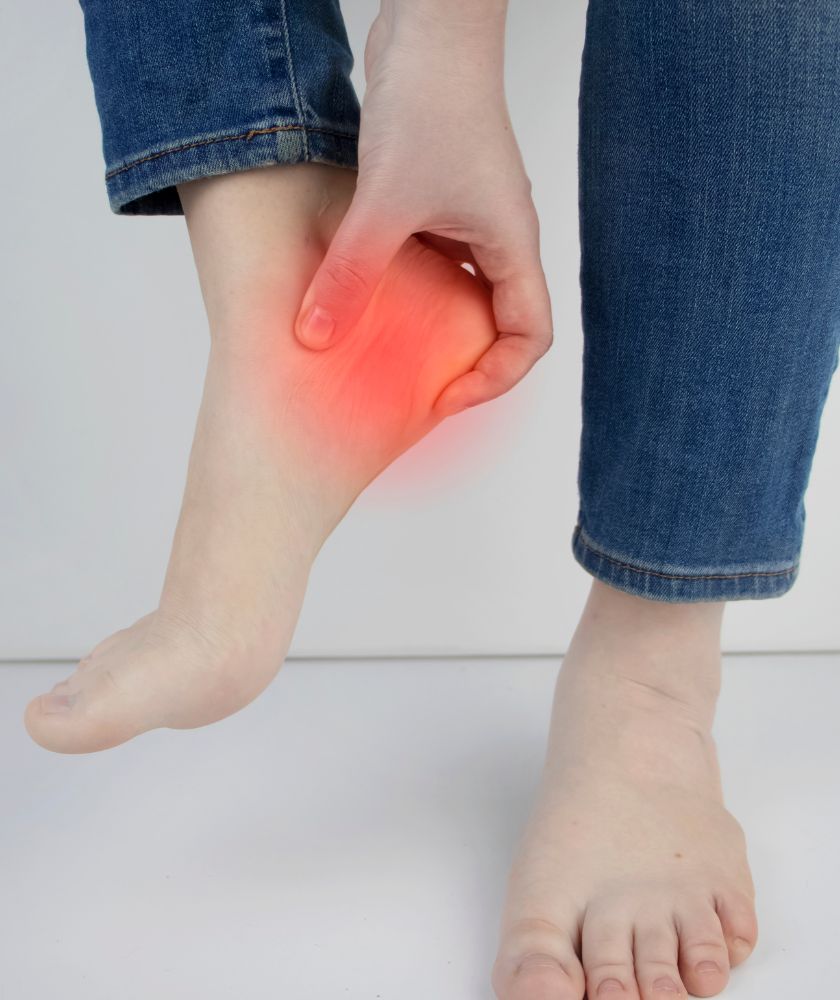Foot Arthritis
Conquer Achilles Tendonitis

What is Foot Arthritis
Foot arthritis, medically known as osteoarthritis of the foot, is a debilitating condition that affects the joints and cartilage in the foot. This form of arthritis arises from the gradual breakdown of the protective cushioning between bones, leading to pain, swelling, and limited mobility. Typically associated with aging, foot arthritis can also be triggered by factors like genetics, prior joint injuries, excess weight, and certain occupational strains. The symptoms manifest as discomfort, stiffness, and tenderness, with pain often exacerbated during weight-bearing activities. Diagnosis is usually established through a combination of clinical assessment, medical history, and imaging techniques such as X-rays, enabling healthcare professionals to accurately evaluate joint health. While there is no cure, various treatments including medication, physical therapy, orthotic devices, and lifestyle modifications can effectively alleviate pain and enhance function, empowering individuals to lead more comfortable lives despite this chronic condition. Early intervention and tailored management strategies play a pivotal role in mitigating the impact of foot arthritis on daily activities.
Foot Arthritis Key points
Foot arthritis, also known as osteoarthritis of the foot, is a condition characterized by the inflammation and degeneration of the joints in the foot. It is a type of arthritis that primarily affects the joints and cartilage in the foot, leading to pain, stiffness, and reduced mobility.
Here are some key points about foot arthritis:
Osteoarthritis (OA): This is the most common form of arthritis and occurs when the protective cartilage that cushions the ends of bones wears down over time. As a result, bones can rub against each other, causing pain, swelling, and stiffness.
Risk Factors: Foot arthritis can develop due to a combination of factors, including age, genetics, previous joint injuries, obesity, and certain occupations or activities that put stress on the feet.
Symptoms: Common symptoms of foot arthritis include pain, swelling, stiffness, and reduced range of motion in the affected joints. The pain is typically worse during weight-bearing activities and may improve with rest.
Location of Arthritis: Foot arthritis can affect various joints in the foot, including the ankle, subtalar joint (between the talus and calcaneus), midfoot joints (such as the navicular-cuneiform joints), and the metatarsophalangeal joints (at the base of the toes).
Diagnosis: A diagnosis of foot arthritis is typically made through a combination of medical history, physical examination, and imaging studies like X-rays or MRI scans. These tests can help evaluate the condition of the joints and rule out other potential causes of foot pain.
Treatment: Treatment for foot arthritis aims to manage pain, reduce inflammation, and improve function. This may include:
- Physical Therapy: Exercises and stretches can help improve joint function and reduce pain.
- Orthotics: Customized shoe inserts can provide support and improve the alignment of the foot.
- Footwear Changes: Wearing comfortable, well-fitting shoes with proper arch support can help alleviate symptoms.
- Injections: Corticosteroid injections can provide temporary relief of pain and inflammation in the affected joints.
- Surgery: In severe cases, surgery may be recommended to repair or replace damaged joints.
Lifestyle Modifications: Maintaining a healthy weight, staying active, and avoiding activities that put excessive strain on the affected joints can help manage symptoms.
Custom foot orthotics are specialized shoe inserts designed to provide personalized support and alignment for the feet. These orthotic devices are custom-made based on a precise mold or digital scan of an individual’s foot. They are crafted to fit the unique contours and structure of the foot, effectively redistributing pressure and correcting misalignments in the joints. By offering targeted support to specific areas of the foot, custom orthotics can help alleviate foot pain associated with conditions like plantar fasciitis, flat feet, and foot arthritis.
It’s important to note that while there is no cure for foot arthritis, early intervention and appropriate management strategies can significantly improve the quality of life for individuals with this condition. If you suspect you have foot arthritis or are experiencing foot pain, it’s recommended to consult a healthcare professional for an accurate diagnosis and treatment plan.
